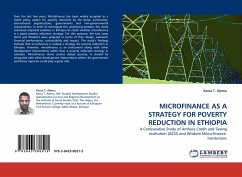An overwhelming majority of the world's poor live in the third world countries. Various approaches have been employed in alleviating poverty of which provision of credit that targets the poor is one. Despite the current enthusiasms in applying the concept of microfinance as a poverty alleviation tool in many countries, the risk management aspects of micro-financing should not be overlooked. This paper highlights several incidences of default risks in microfinance industry. The problem identified was that microfinance programs perform scantily because of delay in repayment and high default rates. Default problems destroy lending capacity as the flow of repayment declines, transforming lenders into welfare agencies, instead of a viable financial institution. It incorrectly penalizes creditworthy borrowers whenever the screening mechanism is not efficient. Credit default may also deny new applicants access to credit as the bank's cash flow management problems augment in direct proportion to the increasing default problem.Because credit risk is one of the most significant risks from a microfinance perspective. A. SAMUEL S. (MSc, MBA in Business Economics)
Hinweis: Dieser Artikel kann nur an eine deutsche Lieferadresse ausgeliefert werden.
Hinweis: Dieser Artikel kann nur an eine deutsche Lieferadresse ausgeliefert werden.








